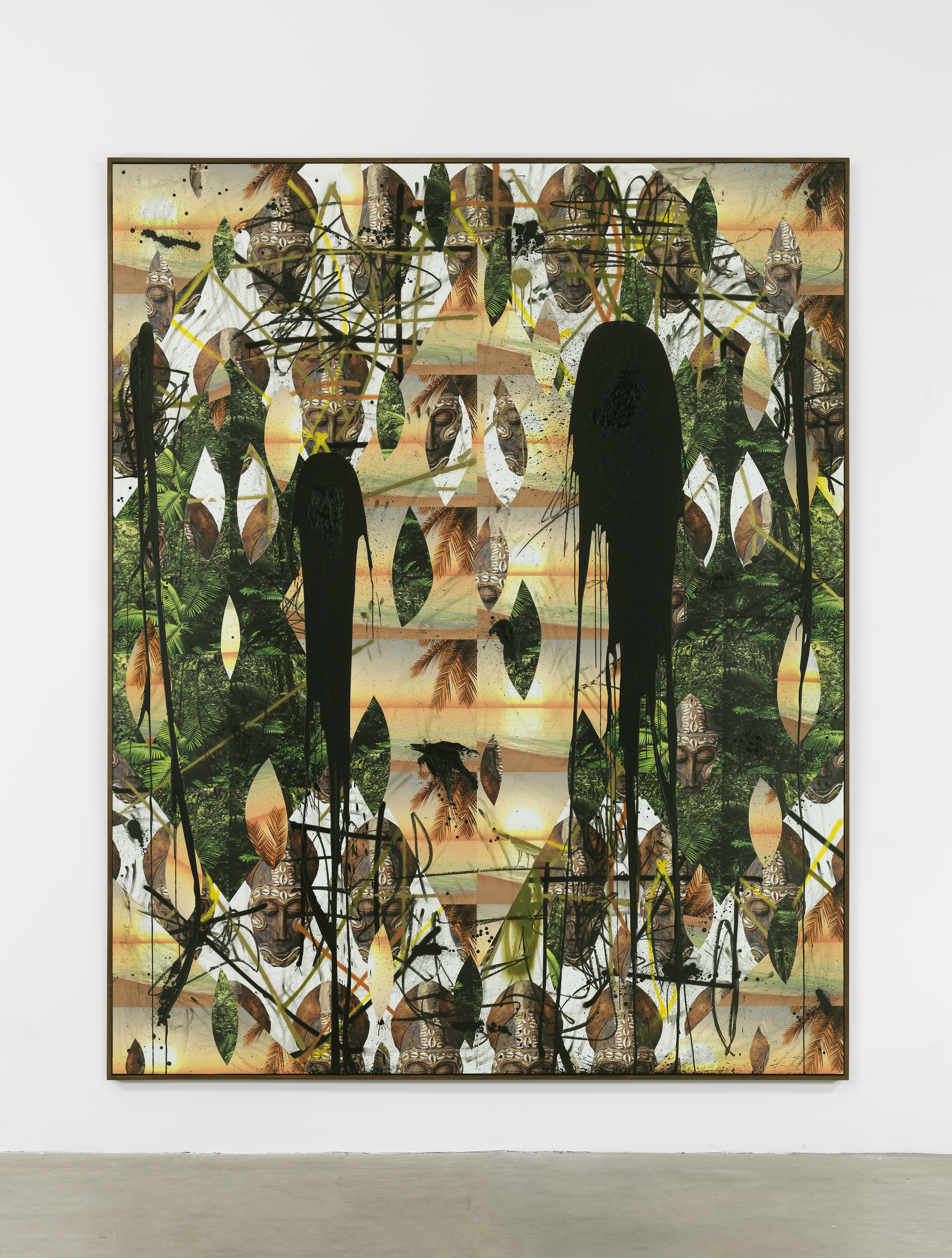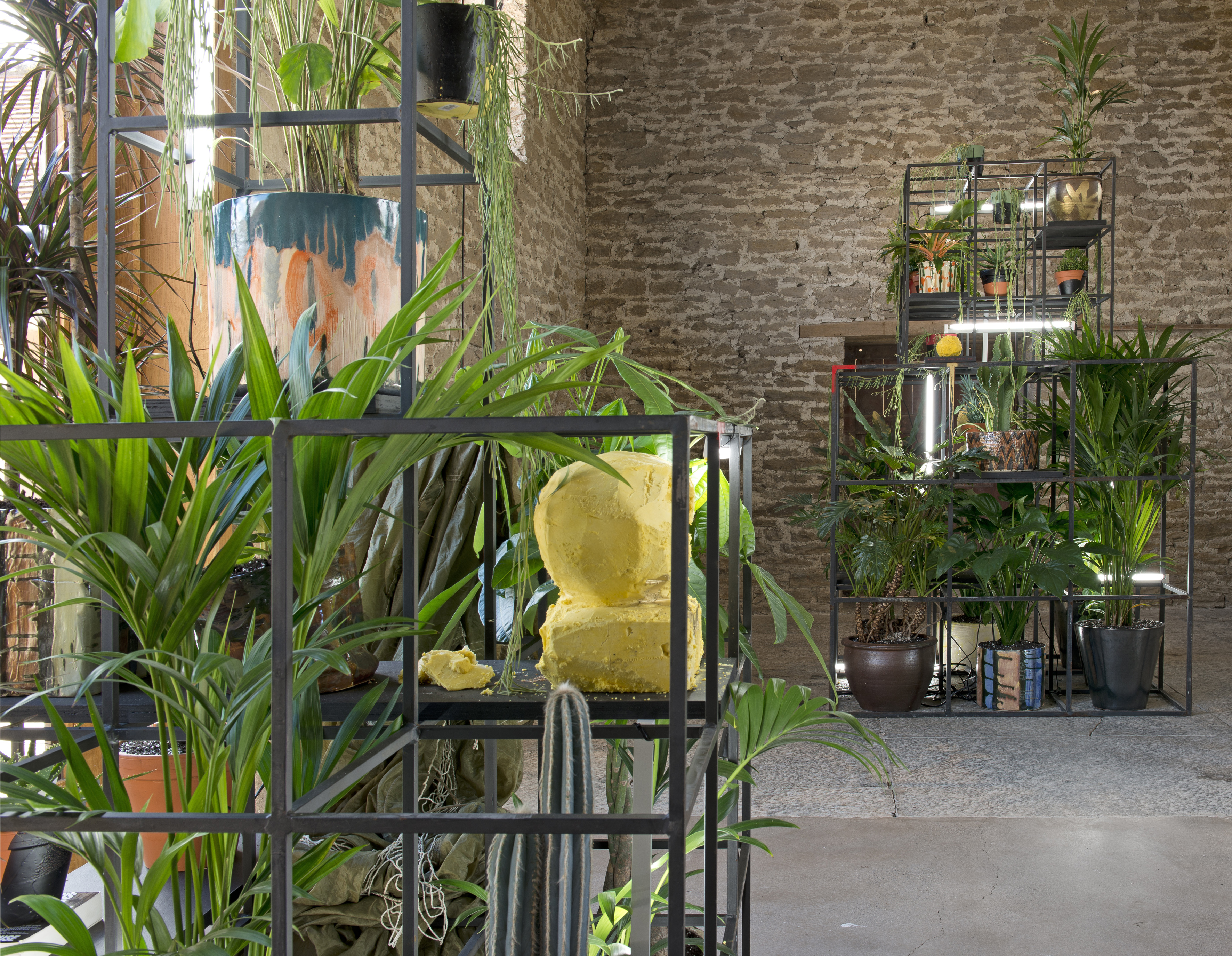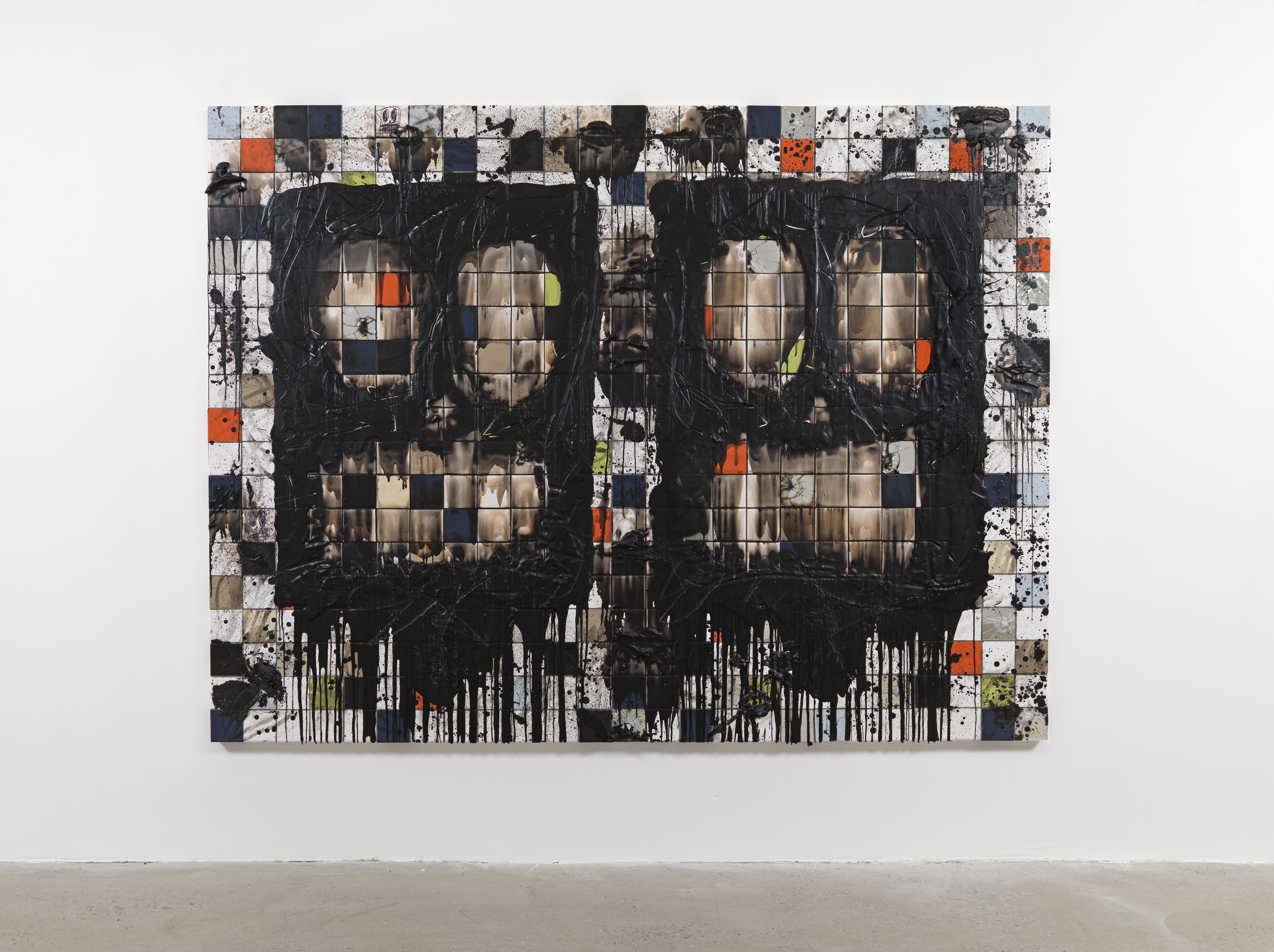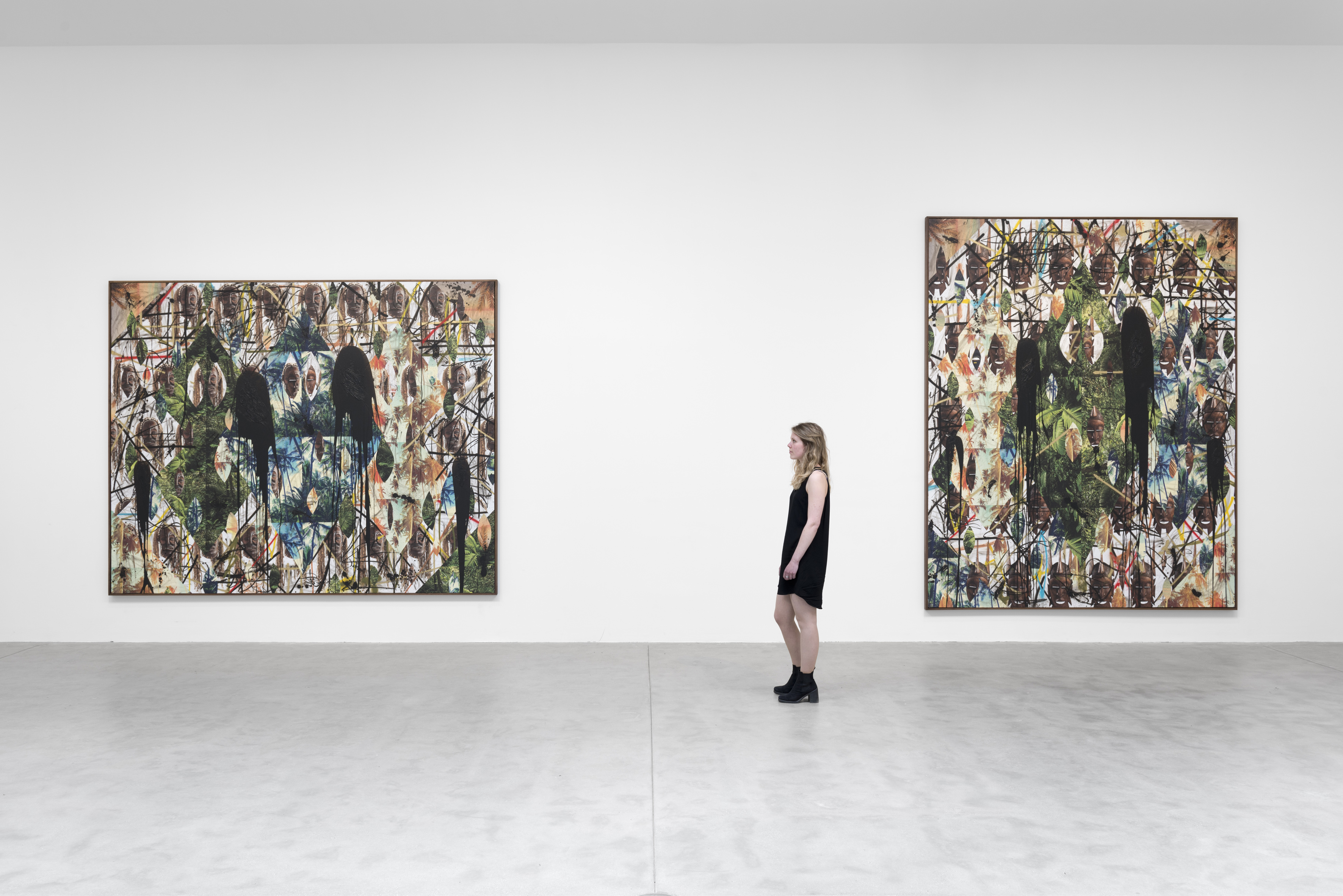
For the show, Johnson has taken his cue from James Baldwin’s 1953 essay Stranger in the Village, which covers the writer’s experience living in a small Swiss village as a young African-American man–possibly, as he suggests at the beginning of the essay, the first the village had ever seen.
Johnson is a self-described “creature of habit”, feeling most at home, he tells a group of us during the show’s preview, in his studio in New York. For this body of work he has considered his status as a stranger in the British town of Bruton (where Hauser & Wirth is situated, a place which is far from representative of the UK as a whole, and where many Brits may feel a little out of place also). In doing so, he conveys a sense of anxiety which is personal—the sense of a potentially incongruous newcomer in a small town—but also global, with many nods to the collective anxiety that has been fuelled by recent political events, not least by his home country’s current commander-in-chief.

The building of Hauser & Wirth is a powerful impressor of anxiety. Its bare brick threshing barn was used to great effect in Jenny Holzer’s ferocious show at the gallery in 2015, which made the most of its dark, dinginess to create a powerful sense of unease (it felt like the last place you might be seen alive after being dragged off by the US Secret Service). Johnson also mentions the powerful impact that Phyllida Barlow’s inaugural GIG had on him, in the way that she broke up and invaded the spaces. Here, he utilizes the clean, white spaces for his most frenzied works—angst in broad daylight—starting his viewers off in the Threshing Barn with a seductively calming set up that hints at the domestic. Long, elegant, household plants fill the space, framed by and poking through cubed, open structures. There are scatterings of mini sculptures, some made from shea butter (of which there is a lump at the end of the show that visitors are invited to moisturize themselves with, as well as black soap–both hugely symbolic materials for Johnson as healing products that can come to speak of Africa for those living in his childhood location of Chicago and further afield). The space feels safe, homely. As Johnson explained, these are pieces that follow on from his previous practice and they seem to create a sense of settling in, as one may do on entering a new place, surrounded by freshly purchased plant-life and personal effects.

On entering the beaming light in the following rooms the sense of fear begins to build, and the characters in Untitled Anxious Drawings in the second room are given no place to hide whatsoever. Scrawled thickly in black, the simple faces (big scribbled holes for eyes, straight black fat lines for mouths) are repeated over and over, totally uncurbed within the frame, jarringly regimented beyond it, sitting in neat rectangles with plenty of surrounding white space on the stark white walls. Effervescent emotion finding itself contained and controlled.

This style of jet black, economically-formed face continues in the next room, in Untitled Clowns, although here there is an even greater sense of panicked urgency, with huge, horrified faces in front of a selection of coloured and mirrored tiles—the small, cracked mirrored tiles setting up the sense of a person being reflected back, a search for self perhaps within these pieces. A single neon spelling out the word “run” offers the most explicit warning yet.
In the subsequent, larger rooms, the idea of hiding, blending in, and concealment comes in. Are those huge dripping black crevices in the centre of each work the pair of eyes from our former, fearful face? The canvas surrounding these two features—which are made up of slivers of thick vegetation to begin with, and later, beach scenes—tell a story of their own, gradually showing more and more open space. Despite the persistence of these two black eye-like forms on each piece, the works toward the end are almost peaceful, looking out into a calm and dreamy landscape.
The question remains: has the figure found peace in its current setting, or simply found escapism in another?
‘Stranger’ runs until 10 September. hauserwirth.com






